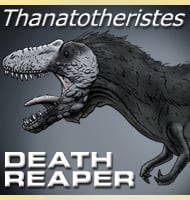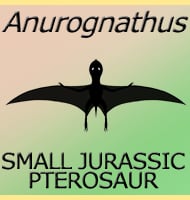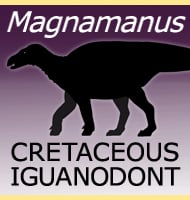In Depth
Gigantosaurus is a little known and currently dubious genus of sauropod dinosaur. The fossils that are assigned to the genus could come from a sauropod, but they were all found disarticulated and separately, raising the notion that they could be from more than one individual. The state of preservation also means that it would also be difficult to attribute further remains to the genus. Because of this other palaeontologists have considered Gigantosaurus to be a synonym of other genera, with Richard Lydekker suggesting Ornithopsis in 1888, and Friedrich von Huene proposing Pelorosaurus in 1909. Today, Gigantosaurus is usually considered to be a Nomen dubium, though the osteoderm is interesting in that if the osteoderm came from a sauropod-like dinosaur, then the remains might be those of a titanosaur or close relative of. Many titanosaurs, most famously Saltasaurus are known to have had osteoderm armour in their skin.
In 1908 the German palaeontologist Eberhard Fraas named fossils of an African sauropod as Gigantosaurus. Fraas did this upon the grounds that he thought that Seeley had not provided a complete enough description as well as the English Gigantosaurus being considered as a synonym to other genera. Fraas was wrong to do this on both counts as under international conventions governing the naming of animals, you cannot use a name that has already been listed, including even if it is a synonym to something else. To do so would just sow the seeds for confusion and make it harder for future researchers to do their work. In 1911 the African fossils were renamed as a new genus by Richard Sternfeld as Tornieria. This was about the end of the Gigantosaurus/Tornieria connection, but the taxonomic history of Tornieria became quite convoluted afterwards and is worth reading in its own right (details on the main Tornieria page).
Gigantosaurus should not be confused with the very similarly named Giganotosaurus, one of the largest predatory dinosaurs of all time.
Further Reading
- Index to the Fossil Remains of Aves, Ornithosauria, and Reptilia from the Secondary System of Strata, arranged in the Woodwardian Museum of the University of Cambridge - H. G. Seleey - 1870. - Skizze zu einer Systematik und Stammesgeschichte der Dinosaurier [Sketch of the systematics and origins of the dinosaurs] - F. v. Huene - 1909. - Dinosaurs in marine strata: evidence from the British Jurassic, including a review of the allochthonous vertebrate assemblage from the marine Kimmeridge Clay Formation (Upper Jurassic) of Great Britain - D. M. Martill, D. Naish & S. Earland - 2006.









